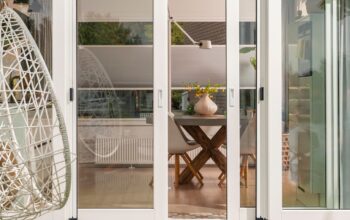A kitchen window isn’t just glass in a frame – it’s a part of your home’s personality. It’s where you pause with your morning coffee, watch the world outside, or sneak a quiet moment between cooking tasks. And choosing the best kitchen window type can make more difference than you think.
My own kitchen window looks out over a small backyard garden. In summer, the scent of freshly cut grass drifts in. In winter, I get that soft, cold morning light. But I’ve also seen kitchens with a small, high window that barely opens – no light, no air, no joy. The difference is night and day.
Why the Right Kitchen Window Matters
A kitchen window does more than let in sunlight. It improves air quality, sets the mood, and even affects your home’s energy efficiency.
- Natural light lifts your mood and makes cooking more enjoyable.
- Good kitchen ventilation solutions keep the air fresh and prevent lingering cooking smells. Properly designed operable windows can also improve indoor air quality by reducing moisture, mold risk, and even supporting natural UV disinfection.
- Energy-efficient windows can help regulate temperature, cutting heating and cooling costs.In fact, replacing older units with ENERGY STAR®-certified models can reduce household energy bills by up to 13% while improving comfort year-round (ENERGY STAR).
Popular Kitchen Window Types Compared
| Type | How It Opens | Ventilation Quality | View Quality | Cleaning Ease | Best Use Case |
| Casement kitchen window | Crank-out from the side | Excellent | Clear, no center rail | Easy (inside access) | Above sinks or counters |
| Sliding kitchen window | Horizontal slide on a track | Good | Slightly obstructed by vertical rail | Harder to clean outside | Wide wall openings |
| Double-hung kitchen window | Sashes slide vertically | Good | Obstructed by horizontal rail | Tilt-in for easy cleaning | Classic look, flexible airflow |
| Awning kitchen window | Hinged at top, opens outward | Good (even in rain) | Mostly clear | Tricky to clean outside | Small kitchens, rainy climates |
Choosing the Best Material for Your Kitchen Window
The frame material is just as important as the style:
- Vinyl kitchen windows – budget-friendly, low-maintenance, and great in humid kitchens.
- Wood kitchen windows – warm and timeless, but require maintenance.
- Fiberglass kitchen windows – durable, paintable, and mimic wood without the upkeep.
- Aluminum kitchen windows – slim and modern, but need thermal breaks for energy efficiency.
Common Mistakes to Avoid
- Choosing style over function – the best kitchen window type is the one you can open easily.
- Ignoring ventilation – pairing a big fixed window with no operable ones is a recipe for stale air. Creating cross-ventilation with well-placed windows can naturally flush out heat, moisture, and pollutants without relying solely on mechanical systems (Better Homes & Gardens).
- Forgetting sun direction – west-facing kitchen windows can be unbearably bright at dinnertime without proper shading.
FAQ – Real Questions from Homeowners
1. What’s the best window style if my sink faces the wall?
If you’ve ever tried leaning over a deep sink to open a stiff old window, you know the struggle. That’s why casement and awning windows are favorites here. Both open with a simple crank, so you get plenty of fresh air without having to wrestle with heavy sashes.
2. I don’t want my kitchen to feel stuffy – how do I get better ventilation?
Good ventilation isn’t just about comfort; it keeps cooking smells, steam, and even moisture problems at bay. An operable window paired with a small exhaust fan can make a big difference. Even better, if you’ve got windows on opposite walls, you can create natural cross-breezes that feel like a built-in air freshener.
3. Are big picture windows a smart choice in the kitchen?
They can be! A wide picture window turns washing dishes or prepping dinner into something almost relaxing – you get light, a view, and a sense of openness. The trade-off? No airflow. That’s why many homeowners combine a big picture window with a smaller casement or slider nearby, so you get the best of both worlds.
4. How do I know if my kitchen windows are wasting energy?
If your kitchen feels like a greenhouse in summer or an icebox in winter, your windows are probably part of the problem. Look for condensation, drafts, or old single-pane glass as signs. Replacing them with ENERGY STAR®-rated models helps lock in comfort while cutting your energy bills – a win-win for both your home and your wallet.
Final Thought
A well-chosen kitchen window can transform your cooking space from purely functional to the most inviting room in your home. Think about light, airflow, and your daily habits – and you’ll find the best kitchen window type for both style and comfort. Because in the end, the right kitchen window isn’t just about the view – it’s about how it makes you feel.




